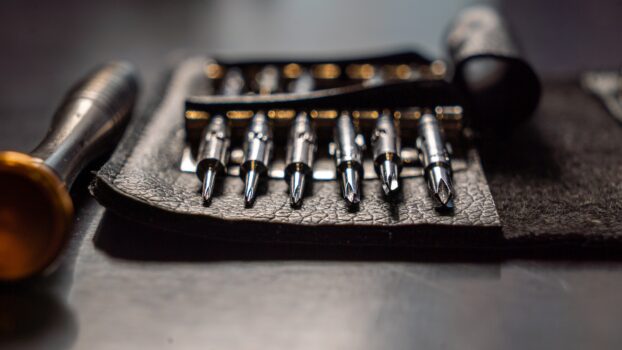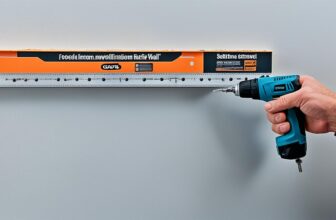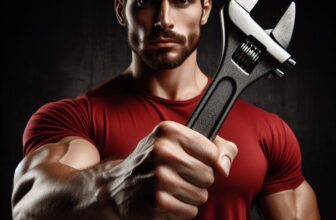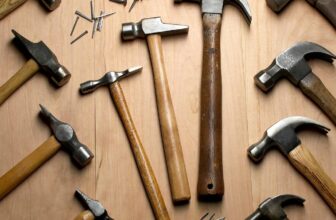Introduction to Home Toolkits and Screwdrivers
Having a well-stocked home toolkit is essential for every homeowner or renter. Even if you don’t consider yourself particularly handy, being prepared with basic tools allows you to perform minor repairs, install fixtures or furniture, adjust appliances, and avoid costly service calls for simple jobs.
One of the most versatile and frequently used tools in any home toolkit is the humble screwdriver. From tightening loose screws to assembling furniture to installing light fixtures, screwdrivers help you get countless tasks done. Selecting the right screwdrivers for your home toolkit ensures you can handle a wide range of DIY projects and maintenance needs.
This comprehensive guide dives into the key types of screwdrivers every home toolkit needs, factors to consider when choosing, maintenance and storage tips, and how to select screwdriver sets. Read on for insights to help you equip your home with these essential tools.
Disclaimer:
Our recommendations are based on extensive experience with and/or knowledge of these products, and we do so not because of the modest commissions we could earn but rather because we believe they are actually beneficial and useful. We are honored to be these tools' affiliates. We might receive commissions from Amazon, and other merchants when you buy something after clicking one of our links. Our affiliate policy is covered in more detail here. If you don't think these things will help you accomplish your goals, please don't spend any money on them.
Types of Screwdrivers Every Homeowner Needs
Screwdrivers come in a range of types to suit different fastening needs. While the number of screwdrivers in your toolkit depends on your DIY skills and projects, most homeowners will benefit from having the following basic varieties:
Flathead Screwdrivers
Flatheads, or straight screwdrivers, have a flat, single-edged tip designed to turn a screw with a single slot cut across the head. The flat tip fits into the slot perfectly. Flatheads work for a variety of around-the-house applications from tightening cabinet knobs to adjusting door hinges or appliances.
Phillips Head Screwdrivers
The Phillips screwdriver, with its iconic four-pointed, cross-shaped tip, was designed to prevent the driver from slipping out of fastener heads. This makes Phillips screwdrivers ideal for driving screws rapidly. Phillips fasteners are ubiquitous around the home, used for everything from installing switch plate covers to assembling furniture.
Torx Screwdrivers
Torx (or star) screwdrivers have a pointed tip that fits into a six-pointed star-shaped recess in the fastener head. The star shape allows for better torque transfer compared to Phillips so the driver is less likely to cam out (slip out under torque). Torx provides a more secure fit, especially for driving screws into hard materials.
Hex Screwdrivers
Hex screwdrivers have a hexagonal tip to match the driving recess in hex socket screw heads. The six-sided shape resists cam-out better than Phillips or slotted screws. Hex fasteners are often used for assembling furniture, especially IKEA products.
Pozidriv Screwdrivers
Pozidriv screwdrivers have a four-pointed tip with additional contact points along each wing for better grip and reduced cam out. Pozidriv is an improvement on Phillips but the two are often interchangeable. Pozidriv excels particularly in high-torque applications.
Tri-Wing Screwdrivers
Tri-wing, or triangular screwdrivers, have a triangular tip with three pointy edges to fit into triangular screw heads. The unique shape provides excellent torque transfer without slippage. Tri-wing screws are commonly used in electronics equipment and appliances.
Within these basic types, you’ll need a range of screwdriver sizes. At a minimum, have small, medium, and large flathead and Phillips head screwdrivers. Screwdrivers with thicker shafts and larger grips provide more torque for driving larger screws while thinner shafts allow accessing screws in tight spaces.
The grip material also matters – rubber, plastic, or coated grips give the best hold and comfort. Insulated screwdrivers are essential for any live electrical work. Beyond the basic types, specialty screwdrivers like offset, stubby, and extender are also useful for accessing awkward spaces.
How to Choose the Right Screwdriver for DIY Projects
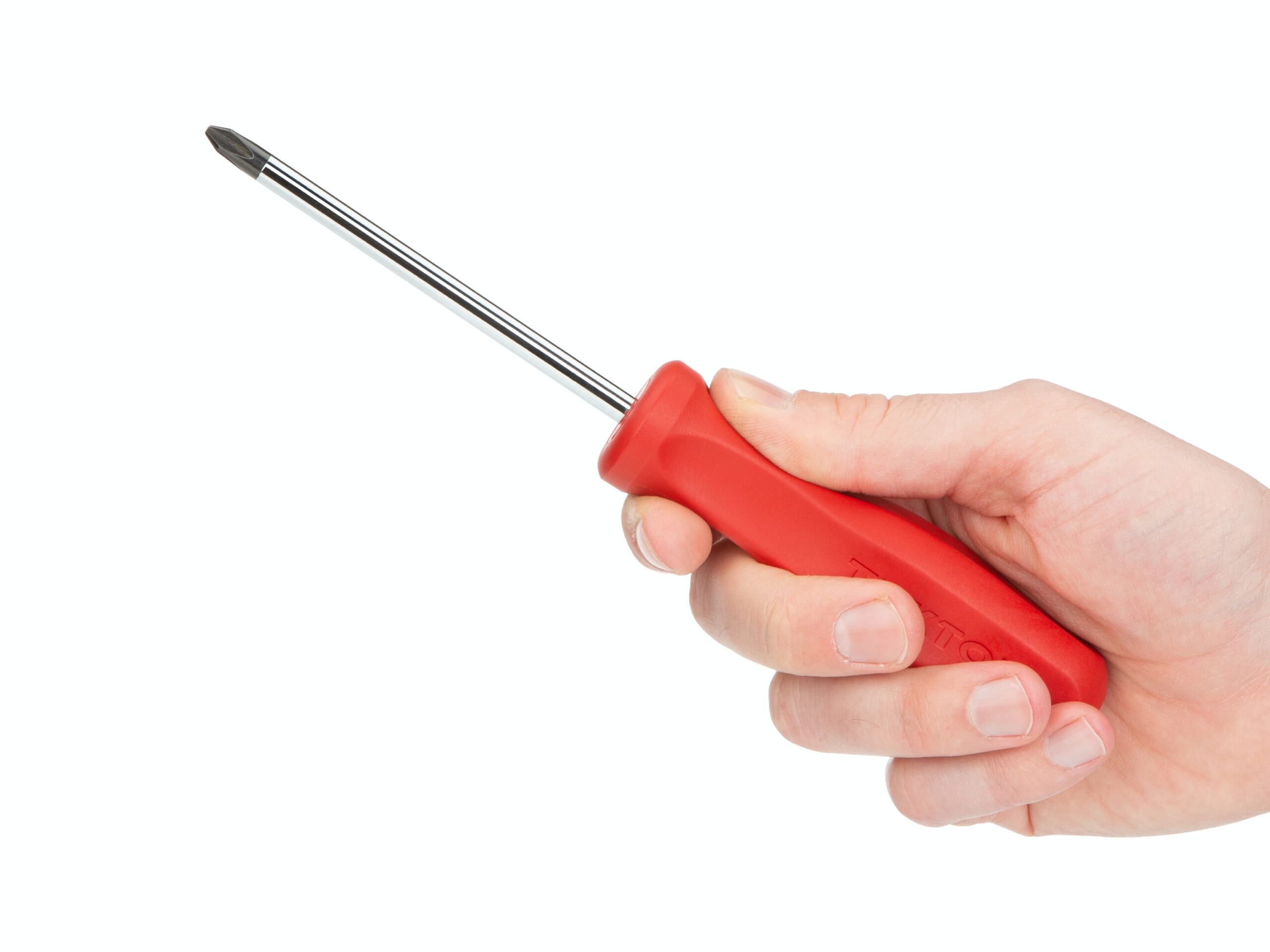
With an array of screwdriver types and sizes to choose from, selecting the right one for the job is essential. Here are tips for matching screwdrivers to your DIY tasks:
Identify the Fastener Type
Examine the item you want to work on to determine the screw head shape and size. This will indicate which screwdriver type you need. If unsure, try a standard Phillips and flathead to see which fits best.
Consider the Task Complexity
Simple tasks like adjusting cabinet knobs require only a basic flathead screwdriver while major furniture assembly calls for full screwdriver sets with multiple tips. Evaluate the scale and complexity of the DIY project when choosing your screwdriver.
Factor in Grip Type
A rubberized grip gives the best twist force for driving screws while a T-handle or ratcheting screwdriver provides increased torque. For high-torque tasks like construction, these are ideal. Standard plastic/wood handles suffice for light-duty use.
Match the Size
Select a screwdriver tip that fits snugly into the screw head without excess play. Too small, and it can strip screw heads. Too big, and it won’t fit. Getting the size right avoids damage.
Consider Accessibility
For screws set deep into recesses, an extra-long screwdriver is needed. Offset and flexible shaft screwdrivers allow access to awkward spots. Evaluate accessibility challenges when selecting tools.
Take Safety Precautions
Insulated screwdrivers are a must for electrical work. A solid grip and proper technique prevent hand injuries. Use work gloves and eye protection for demanding tasks. Don’t improvise unsafe substitutes for screwdrivers.
Following these tips helps ensure you have the right screwdriver to get the job done safely and effectively.
Screwdrivers for Electronics and Delicate Work
Working with electronic equipment, small appliances, jewelry, spectacles, or other delicate items requires a precision screwdriver. Some top picks available on Amazon include:
- The 6-piece precision screwdriver set by MulWark has magnetic tips to grip tiny screws, durable chrome vanadium steel shafts, and a swivel end cap for continuous finger pressure while driving.
- The 12-piece magnetic screwdriver set by BLACK+DECKER contains Phillips, flat head, and precision drivers with color-coded handles and magnetic tips to securely hold fasteners while working.
- The X5 Max Precision Screwdriver Set by Fanttik has an ergonomic, non-slip grip handle and strong magnetic tips to firmly hold tiny screws for electronics and precision work.
- The Klein Tools electronics screwdriver set provides cushioned, rubberized handles for comfort and control along with durable chrome-plated shafts with a tamperproof Torx bit for security applications.
Heavy-Duty Screwdriver Sets
For demanding DIY, construction, and home improvement projects, a durable screwdriver set is a must-have. Top-rated options on Amazon include:
- The WORKPRO Screwdriver Set has an ergonomic grip handle for reduced hand fatigue and S2 steel shafts for exceptional strength.
- The Craftsman Screwdriver Set earns praise for its hardened alloy steel shafts, smooth torque, and cushion grip handles suitable for high torque applications.
- The DEWALT Screwdriver Set features tough blades forged from high-grade steel paired with a comfortable grip handle for driving long or oversized fasteners.
Screwdriver Maintenance and Care Tips
Like any frequently used tool, screwdrivers benefit from proper maintenance and care to ensure their performance and extend their lifespan. Here are top tips for keeping your screwdrivers in top condition:
Clean Regularly
Wipe down screwdriver handles frequently to remove dirt, debris, oil, and grime that can make them slippery and difficult to grip. Use a solvent like alcohol or acetone to remove stubborn gunk. Clean metal shafts too.
Lubricate Occasionally
A light application of machine oil on metal screwdriver shafts prevents rust and maintains smooth operation. Avoid getting lubricant on handles as it causes slippage.
Inspect for Damage
Check screwdriver tips and shafts for wear, chips, cracks, or bends regularly. Damaged screwdrivers can snap under torque or damage screw heads and hardware.
Store Properly
Keep screwdrivers in a dry, temperate space away from chemicals and heat sources. Store vertically in a toolbox organizer rack to protect blade edges and avoid bending. Don’t toss it loose in a tool drawer.
Replace When Needed
Retire heavily worn or damaged screwdrivers. Attempting to use dysfunctional tools leads to frustration and risks further damage. Replace vital screwdrivers so your toolkit remains functional.
Screwdriver Storage Solutions
Proper storage keeps your screwdrivers organized, protected, and easy to find. Useful solutions available on Amazon include:
- DEWALT’s Screwdriver Bit Set and Tough Case have designated spots for tips and handles.
The Ernst Manufacturing Tool Boss Magnetic Parts Tray organizes bits plus small parts and hardware.- A bit caddy like the Custom LeatherCraft 4-Pocket Carrier stores multiple bit types right on your toolkit.
Screwdriver Cleaning Supplies
Cleaning kits provide specialty brushes, solvents, lubricants, and cloths tailored for screwdriver maintenance. Top Amazon options include:
- The Screwdriver Cleaning Kit by SINUODES has everything needed for professional-grade cleaning.
- The Briggs & Stratton Essentials Cleaning Kit contains supplies for cleaning a range of outdoor power equipment.
- 3-IN-ONE Multi-Purpose Oil also works great for lubricating screwdrivers to prevent rust and stickiness.
Proper maintenance and storage help screwdrivers serve reliably for years. Investing a few minutes into care pays dividends every time you use these essential tools.
Screwdriver Sets: What to Look For
Purchasing a screwdriver set allows you to acquire a range of useful screwdriver types and sizes in one convenient package. Here’s what to consider when selecting a set for your home toolkit:
Variety of Tip Types
Look for sets that include multiple driver types – at least Phillips, flathead, Torx, and hex, plus specialty bits. Diverse tips handle different fastener heads for versatility.
Range of Sizes
A good set has small, medium, and large screwdrivers of each major type to accommodate different screw sizes. Precise sizing prevents cam-out and striping.
Durability
Quality steel shafts resist bending and breaking while ensuring precision fit. Durable construction stands up to heavy use. Sets meant for professional use are the toughest.
Ergonomic Handles
Cushioned, rubberized, or contoured handles provide a comfortable, slip-free grip and allow the application of maximum twist force without hand fatigue.
Storage/Organization
Look for a protective case or pouch to keep the set organized. Compartments, holders, or markings for each piece enable easy access.
Budget-Friendly Screwdriver Sets
These Amazon finds deliver versatility and reliability at a reasonable price:
- The ORIA 60-in-1 Precision Screwdriver Set has a compact case filled with an extensive assortment of bits.
- The Craftsman 9-31794 Slotted and Phillips Screwdriver Set offers alloy steel shafts and ergonomic, rubberized grips.
- The TEKTON Everybit (TM) Electronix Screwdriver Set combines versatility and precision at a wallet-friendly price.
High-End Screwdriver Sets
For top-tier performance, durability, and features, invest in sets like:
- Wera Kraftform Kompakt 60 Screwdriver Set has durable chrome-vanadium-molybdenum steel shafts and ergonomic handles.
- The Stalwart 75-MJ5051 Contractor Grade Screwdriver Set is forged from premium S2 alloy steel for exceptional longevity.
- The Milwaukee 48-22-2302 Insulated Screwdriver Set excels for live electrical work thanks to 1,000V insulated shafts.
While basic individual screwdrivers work for most around-the-house tasks, a comprehensive set expands your capabilities to take on more complex DIY repairs and projects.
Electric Screwdrivers vs. Manual: A Comprehensive Guide
Both electric and manual screwdrivers have a place in home DIY. This overview compares the two types to help you decide what’s best for your toolkit and projects.
Power and Torque
Cordless electric screwdrivers provide more twist force and torque for driving large screws rapidly into dense materials. Their limited runtime balances speed. Manual models require more physical effort but aren’t battery-dependent.
Versatility
Manual screwdrivers work for countless around-the-house applications from tightening hinges to assembling furniture. Electric models excel for repetitive high-torque tasks like construction projects or woodworking.
Ergonomics
The compact size of electric screwdrivers allows excellent grip and easy handling in tight spaces. Some have adjustable handles too. Many manual drivers also feature ergonomic grip designs for comfort.
Precision
Manual screwdrivers allow exceptional precision and control for detail-oriented tasks. Variable speed triggers on electric models provide precision when needed but not quite to the same degree.
Safety
Electric drivers can be unsafe at high torque/speed without due caution. Manual models pose little risk but offer less hand protection. Some electric models have torque limiters for safety.
Affordability
Top manual screwdrivers cost only $10-15. Electric models range from $30 portable drivers to $200+ high-end ones. Replacement batteries add ongoing costs for electric tools.
For most homeowners, having both an electric screwdriver for efficiency plus manual drivers for control strikes the ideal balance.
Top Electric Screwdrivers
When you need power and speed for driving screws, these electric models on Amazon deliver:
- DEWALT’s 20V MAX Cordless Screwdriver has optimal torque, runtime, and LED light.
- The rechargeable Makita Screwdriver features an adjustable speed trigger for precision control.
- The BLACK+DECKER 4V Max Screwdriver is a budget-friendly model adept at detail work in tight spaces.
Best Manual Screwdrivers
For versatility and precision across home tasks, top Amazon picks include:
- The Husky Homeowner’s Screwdriver Set has cushioned, non-slip grips and S2 steel shafts to cover most DIY needs.
- The Klein Tools Cushion Grip Screwdriver Set offers durable precision and comfort across common fastener types.
- The Craftsman 9-31796 Phillips and Slotted Screwdriver Set combines hardened steel shafts with soft rubber handles.
The choice between electric and manual comes down to your project demands. For most DIYers, having both in your toolkit brings maximum functionality.
The Role of Screwdrivers in Home Improvement Projects
From routine repairs to major renovation work, screwdrivers are indispensable in home improvement tasks. Here are just some of the ways these versatile tools get the job done:
Installing and Replacing Locks
Installing new door knobs, latches, deadbolts, and other lockset hardware often involves removing the old components first. A flathead screwdriver preys off the existing lock plates while Phillips and Torx drivers remove the bolt screws.
Hanging Decor and Fixtures
Picture frames, mirrors, wall sconces, curtains, and blinds all require screwdrivers for installation. The right driver secures brackets, hangers, and hardware to keep decor securely mounted.
Adjusting and Repairing Furniture
From tightening wobbly chairs and table legs to replacing drawer glides/pulls on dressers, screwdrivers adjust and fix up furniture around the home. Their precision allows fine-tuning assemblies.
Appliance Maintenance
Over time, screws securing stove knobs, electrical panels on washers/dryers, and access plates on HVAC equipment work loose. A quick tightening with a screwdriver prevents costly breakdowns.
Building Projects
Woodworking, shelving installation, laying subflooring, constructing decks/fences, and similar building work rely heavily on screwdrivers for securing fasteners into structural materials.
For virtually any home repair or upgrade, keep a quality screwdriver set handy to handle secure fastening tasks.
Screwdrivers for Furniture Assembly
Assembling ready-to-assemble furniture requires the right screwdriver tools. Top options on Amazon include:
- The WORKPRO 7-Piece Home Repair Tool Set has multiple tips plus a ratchet handle for rapid driving without overexertion.
- The Husky 70-piece Ratcheting Screwdriver Set suits detailed assembly or intricate electronics work thanks to its reversible ratchet driver and assorted bits.
- The Craftsman Home Tool Kit includes nut drivers, Hex keys, and both Phillips and slotted screwdrivers for versatile furniture building.
Multi-Functional Screwdrivers
When one tool can tackle many jobs, it saves money and storage space. Top multi-use screwdrivers on Amazon:
- The XOOL 12-in-1 Multi-Bit Ratcheting Screwdriver has an array of bits plus a reversible ratchet for driving speed.
- The WORKPRO 4-in-1 Multi-Bit Screwdriver offers multiple tips including square recess, Torx, Phillips, and flathead in one convenient tool.
- The Channellock 13-in-1 Screwdriver Nut Driver Tool provides various driver tips plus nut driver sizes.
Versatile screwdrivers suited for assembly, repair, and all-around home use deliver convenience and functionality saving space in your toolkit.
Safety Precautions When Using Screwdrivers
While screwdrivers seem innocuous, injuries can occur without observing basic safety measures. Follow these precautions when using screwdrivers:
Use Proper Hand Placement
Grip the handle close to the base, not near the tip which can break under torque. Place the non-dominant hand safely away from the screw’s path to avoid accidental stabbing.
Position Your Body Stably
Stand or brace yourself firmly when exerting heavy downward pressure to drive screws. Unstable footing risks the screwdriver slipping off the screw and stabbing your hand.
Wear Protective Gear
Safety glasses guard your eyes from fastener shards or slippage near the face. Work gloves protect if the screwdriver slips. Steel-toe boots are essential for construction.
Don’t Improvise Tools
Avoid the temptation to use knives, keys, or unfit substitutes when you lack the proper screwdriver. Improper tools can dangerously slip off fasteners leading to hand and facial injuries.
Take Breaks
Long screw-driving sessions lead to hand fatigue, increasing the risk of losing grip. Take regular breaks to avoid this and repetitive strain injuries.
Observing sound safety practices reduces injury risk despite the deceptive simplicity of screwdrivers.
Screwdriver Safety Gear
Highly rated protective equipment available on Amazon includes:
- NoCry Safety Glasses for impact protection from metal shards and slippage.
- Ironclad General Utility Work Gloves defend hands against blisters, cuts, and pinches.
- DEWALT Steel Toe Work Boots have slip-resistant soles and electrical hazard protection.
Child-Safe Screwdrivers
For young helpers, opt for kid-friendly options like:
- Battat’s Toy Tool Set has blunt, plastic screwdriver shafts suited for pretend play.
- Melissa & Doug’s Wooden Screwdriver Set features chunky, rounded wood handles sized for a child’s grip.
- The ToyVelt Plastic Screwdriver Set has plastic shafts and oversized soft handles ideal for small hands.
Safety gear ensures accident protection while child-sized tools allow supervising youngsters’ involvement in age-appropriate DIY tasks.
Magnetic vs. Non-Magnetic Screwdrivers: An Analysis
Screwdrivers contain either magnetized steel shafts or non-magnetic shafts, usually chromed brass. Each has pros and cons:
Holding Power
The magnetism in steel shafts provides a firm grip on screws, bits, and fasteners, preventing drops. Non-magnetic drivers require manually holding bits in place.
Torque Transfer
Magnetic tips generally allow better torque transfer for driving screws. Non-magnetic drivers with loose bits lose some rotational force between the bit and shaft.
Durability
Chrome plating on solid brass shafts makes non-magnetic drivers very durable and corrosion-resistant. Bare steel magnetic shafts can rust over time.
Precision
Non-magnetic drivers minimize attraction between the shaft and internal device components, ideal for precision electronics work. Magnetic ones slightly attract screws in unintended ways.
Versatility
Non-magnetic drivers accommodate quickly swapping specialty bits as needed. Magnetic tips hold standard bits firmly but lack the same flexibility.
Choose magnetic screwdrivers for general driving power and convenience or non-magnetic for electronics and precision applications.
Best Magnetic Screwdrivers
Top magnetic screwdrivers on Amazon include:
- Wera Kraftform Micro Magnetic Screwdriver Set with strong yet compact magnetic shafts.
- Picquic Super Magnet Phillips and Slotted Screwdrivers provide superior magnetic grip.
- Craftsman Extreme Grip Magnetic Screwdriver Set with rubberized handles and improved magnets.
Quality Non-Magnetic Screwdrivers
For specialty non-magnetic applications, excellent Amazon options are:
- Neiko Non-Magnetic Stainless Steel Screwdriver Set provides chrome-plated, non-magnetic durability.
- HART Non-Magnetic Professional Screwdriver Set with an assortment of standard and specialty bits.
- SE JS10 Non-Magnetic Mini Screwdriver Set is ideal for intricate electronics and watch repair.
Evaluate your needs to decide between magnetic or non-magnetic drivers tailoring your toolkit accordingly.
The Evolution of Screwdrivers: History and Modern Innovations
While the basic design has remained unchanged, incremental innovations have enhanced screwdrivers over their lengthy history.
Early Origins
The first known screwdrivers date from the late 15th century. These early versions had flat blade tips forged from steel and basic wooden handles. Designs were largely unchanged for centuries.
Spiral Ratchet Drivers
In the late 1800s, ratcheting drivers were invented allowing continuous rotation without removing and repositioning the tip. This increased driving speed and efficiency.
Improved Ergonomics
The early 20th century saw screwdriver handles evolve from basic wood to more ergonomic plastic, rubber, and tri-lobular shapes: this reduced hand fatigue and slippage for better grip.
Specialty Tips
Beyond basic flathead and Phillips, tip designs like Torx, Hex, Tri-Wing, and Pozidriv emerged by the 1960s—specialty tips suited to increasingly complex mechanical and electronic applications.
Magnetic Drivers
Magnetized steel shafts appeared in the 1970s, enabling tips to grip screws for simplified starting and driving. This innovation improved convenience and utility.
Cordless Power
Rechargeable power handles for screwdriver bits arrived in the 1990s, providing increased torque. This is built on manual ratcheting drivers for boosted speed and efficiency.
Today’s drivers represent centuries of small refinements that add up to vast leaps in functionality enhancing utility.
Innovative Modern Screwdrivers
Cutting-edge offerings available on Amazon include:
- Picquic’s NoeGyro Technology provides effortless starting of screws without magnetic attraction.
- The MegaPro Ratcheting Screwdriver has an advanced 13-position ratchet head for ultra-fast driving speed.
- The Milwaukee Fastback Utility Knife combines a flip knife and multi-bit screwdriver in one for maximum functionality.
Classic Reliable Models
Trusted, proven designs remain go-to choices for many, like:
- Stanley’s Classic 99E Retractable Utility Knife with spare blade storage in its durable metal handle.
- Estwing’s Nail Pulling Hammer maintains the iconic solid steel construction passed down for generations.
- Channellock’s Code Blue Lighted Screwdriver illuminates your work area without the hassle of separate flashlights.
Blending technological progress with timeless efficacy makes today’s screwdrivers the most effective and efficient yet thanks to centuries of ongoing enhancements.
Conclusion
As this comprehensive guide illustrates, screwdrivers are far more than just simple tools. The array of types and innovations available means selecting the right drivers for your home DIY toolkit is vital for effective, safe, and enjoyable projects.
From precision electronics work to heavy-duty construction, screwdrivers tackle countless around-the-house jobs. Investing in quality drivers ensures you have dependable performance whenever the need arises to secure, adjust, repair, or build household items.
While manual screwdrivers handle most basic tasks, electric drivers provide increased power and torque for efficiency in repetitive or high-demand applications. Having both manual and powered options creates a versatile toolkit.
Additionally, taking steps to properly store, maintain, and use your screwdrivers safely extends their longevity while preventing injuries. This guide only scratches the surface of the broad utility screwdrivers bring to home projects. Check out the many linked specialized articles to dive deeper into maximizing the potential of these indispensable tools.
With the right screwdriver tools selected for your home improvement needs, you can take on more DIY repairs, construction, and upgrades with confidence. So equip your toolkit with the essential drivers showcased here, follow the maintenance tips, apply safety best practices, and tackle your next household project like an experienced pro!
Resources:
[1] https://www.nytimes.com/wirecutter/reviews/best-basic-home-toolkit/
[2] https://www.lowes.com/n/buying-guide/assemble-a-basic-tool-kit
[3] https://www.thespruce.com/basic-household-tool-kit-1976251
[4] https://www.homedepot.com/b/Tools-Hand-Tools-Hand-Tool-Sets-Home-Tool-Kits/N-5yc1vZc90n
[5] https://www.popularmechanics.com/cars/how-to/a4755/4334647/

